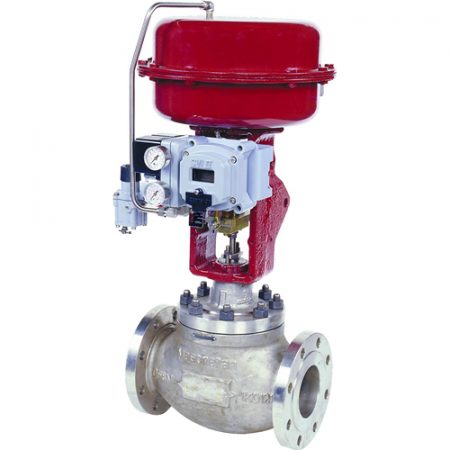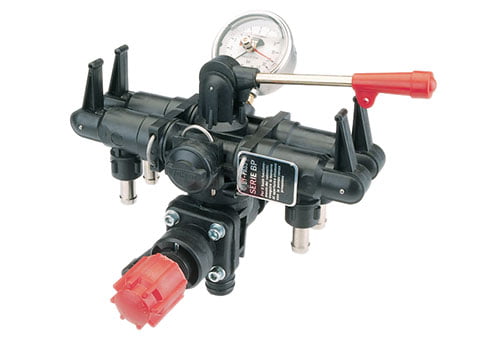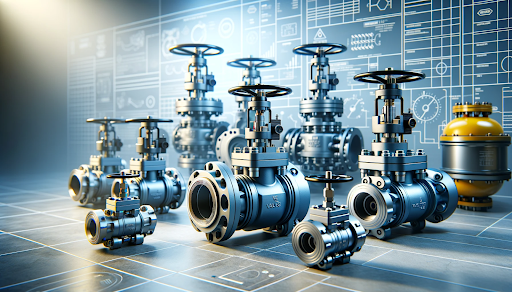How Control Valves Influence Energy Performance in Industrial Settings
How Control Valves Influence Energy Performance in Industrial Settings
Blog Article

Maximize Power Cost Savings and Convenience With Advanced Building Automation Controls
In the realm of modern-day architecture and center management, the assimilation of innovative building automation controls stands as a critical innovation. By utilizing the power of automation, buildings can adjust, react, and evolve in methods that were as soon as inconceivable.
Power Performance Conveniences
Energy efficiency advantages can substantially decrease energy intake and functional costs in buildings. By applying energy-efficient methods and innovations, structure owners and drivers can accomplish considerable financial savings while additionally adding to environmental sustainability. Among the main advantages of improving energy performance in structures is the decrease of utility expenses. Energy-efficient systems, such as sophisticated building automation controls, can maximize the use of resources like home heating, cooling, and illumination, causing reduced power costs over time.
In addition, enhanced energy efficiency can extend the life-span of structure devices and systems. By running more effectively, HVAC systems, lighting fixture, and other structure parts experience much less damage, causing lowered upkeep and substitute expenses. Additionally, energy-efficient structures often regulate higher residential property values and rental rates, providing long-term monetary advantages to proprietors.
Furthermore, power effectiveness can enhance passenger comfort and performance. Correctly managed interior settings with ideal lights and thermal conditions produce a more positive and helpful office, bring about boosted staff member satisfaction and efficiency. On the whole, the energy performance benefits connected with innovative building automation controls are diverse, including cost savings, environmental stewardship, and resident wellness.
Boosted Convenience Control
Enhancing comfort control in structure atmospheres needs an innovative combination of sophisticated automation systems for optimum owner health. By using sophisticated building automation controls, facilities can tailor the interior setting to satisfy the specific needs and preferences of passengers. control valves.
Boosted convenience control surpasses standard temperature changes. It consists of attributes such as personalized setups, occupancy sensing units, and natural light usage to produce a vibrant and receptive atmosphere. By incorporating these innovative controls, buildings can not only enhance comfort however likewise enhance power performance by optimizing system operations based on actual tenancy and use patterns. Ultimately, prioritizing passenger comfort via sophisticated automation systems causes a more delightful and healthier interior setting.
Functional Effectiveness Improvements

Additionally, the application of real-time surveillance and analytics tools makes it possible for building drivers to identify energy ineffectiveness and operational anomalies without delay. By constantly monitoring power use patterns and system efficiency metrics, adjustments can be made in look at more info real-time to maximize energy consumption and make certain peak operational performance. control valves. Additionally, including demand reaction approaches right into building automation controls can additionally boost functional efficiency by dynamically adjusting energy usage based on grid conditions and prices signals
Indoor Environment Optimization
Reliable indoor climate optimization is a fundamental element of structure automation controls, ensuring passengers' convenience and well-being while maximizing power cost savings. By using advanced sensing units and controls, building automation systems can continuously keep track of and adjust temperature, moisture degrees, air top quality, and ventilation to develop an optimal interior atmosphere. Preserving consistent and comfortable problems not only enhances resident satisfaction however also boosts performance and overall well-being.
Interior environment optimization additionally plays a read here vital role in power performance. By fine-tuning heating, air flow, and air conditioning systems based on real-time data and tenancy patterns, building automation controls can dramatically minimize energy consumption - control valves. Executing methods such as demand-controlled ventilation and thermal zoning can help decrease energy waste while ensuring that each area of the structure receives the essential conditioning.

Sustainable Setting Production
Structure automation controls not only optimize indoor climate problems for energy performance and resident comfort but also lay the structure for creating a sustainable atmosphere via calculated management of resources and systems. By integrating innovative structure automation innovations, such as sensors, actuators, and smart software, centers can monitor and readjust power use in real-time to minimize waste and lower their carbon impact. These systems allow predictive maintenance, identifying prospective issues before they intensify and enhancing devices performance to improve durability and effectiveness.
Furthermore, lasting environment production prolongs past energy monitoring to encompass water conservation, waste decrease, and interior air quality improvement. Building automation controls can regulate water use, identify leakages, and make you can find out more sure proper waste disposal practices, contributing to total sustainability efforts. In addition, by checking and managing air flow and filtering systems, these technologies improve occupant wellness and efficiency while lowering power usage associated with a/c operations.
Verdict
To conclude, advanced building automation regulates offer substantial benefits in regards to power savings, convenience control, functional performance, interior environment optimization, and developing a sustainable atmosphere. By applying these controls, buildings can accomplish optimal efficiency while minimizing power consumption and enhancing passenger convenience. It appears that using sophisticated automation modern technology is important in boosting structure efficiency and producing a much more lasting future.
Power effectiveness advantages can dramatically lower power usage and functional costs in buildings. In general, the power performance advantages connected with sophisticated building automation controls are complex, including expense savings, ecological stewardship, and resident health.
Furthermore, incorporating demand action techniques right into structure automation controls can further enhance operational efficiency by dynamically readjusting power usage based on grid problems and pricing signals.
Building automation manages not only optimize interior climate conditions for energy efficiency and passenger comfort yet additionally lay the structure for producing a lasting atmosphere via calculated management of sources and systems.In conclusion, progressed building automation regulates offer significant advantages in terms of power financial savings, convenience control, functional efficiency, indoor environment optimization, and developing a sustainable setting.
Report this page